The Cause: the refugee crisis, expressed in a shoebox
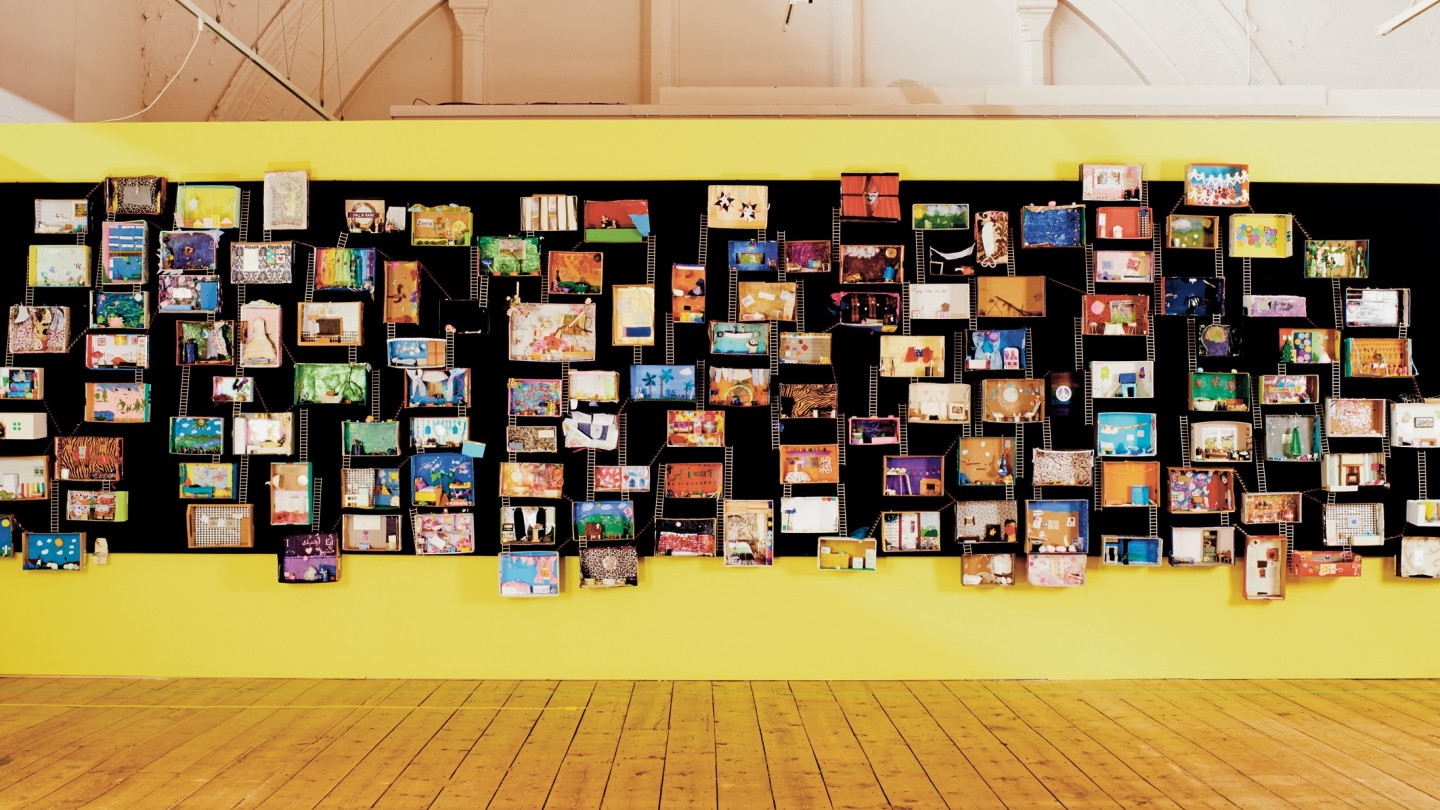
Roula Khalaf, Editor of the FT, selects her favourite stories in this weekly newsletter.
The self-designed West Sussex home of Dutch architect Catja de Haas is a window onto her principled aesthetics. Underlining the building’s modernist-inspired, wood-clad form is a strict adherence to sustainability and a desire to blend in with the landscape. The coolly considered house gives few clues, however, to de Haas’s other passion – a community arts initiative funded by profits from her architecture practice that aims to raise awareness of homelessness and the refugee crisis, and for which she has collaborated with Oxfam on projects since 2019.
The Giant Dolls’ House Project asks its participants to create a miniature roomscape in a box. The dioramas are then displayed en masse as an installation, linked by ropes, ladders and ramps in a colourful cardboard maze that muses on the meaning of home. The idea was born out of de Haas’s PhD studies on how dolls’ houses – from elaborate 17th-century Dutch examples to the feminist Dollhouse created by artists Miriam Schapiro and Sherry Brody in the 1970s – reflect changing ideas about the home.
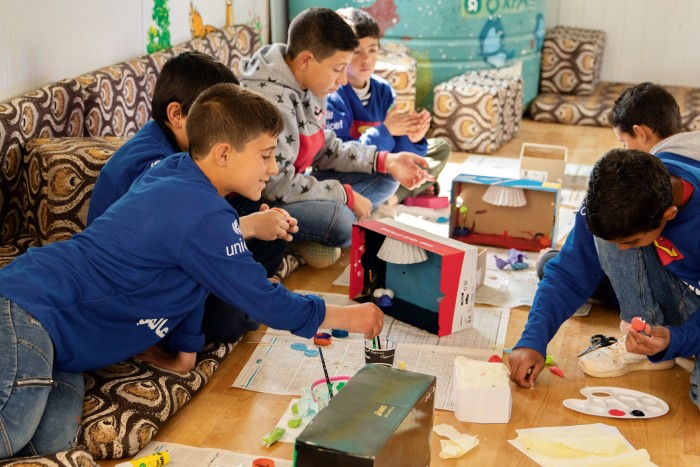
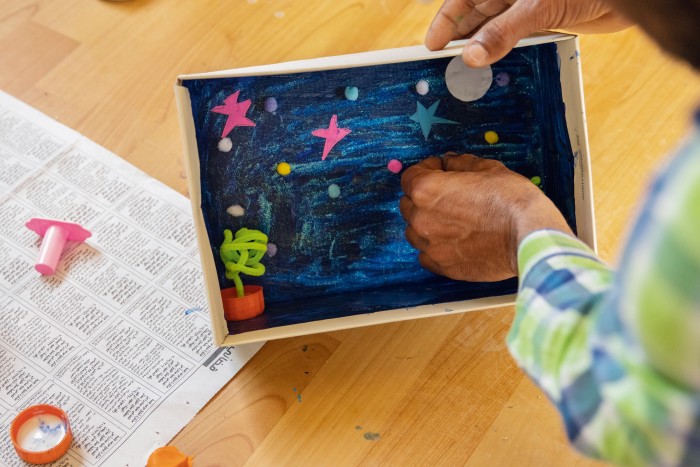
“Because dolls’ houses are so friendly, they are a really good way to get serious messages across,” says de Haas, who started the project in 2014 and has run workshops with London schoolchildren and community groups in Goa and Za’atari, the Jordanian camp that is home to around 80,000 Syrian refugees. “You see all the little personal stories and it becomes clear that we are all human and idiosyncratically different. It really is an equaliser. Once you start making, you think with your fingers and you develop a narrative.”
For Sara Cowan, senior campaign manager at Oxfam GB, The Giant Dolls’ House Project represents “a different way for people to share their stories”. She points to a box by 12-year-old Mariam, in Za’atari, who had created a miniature clothing boutique to convey her ambition to become a fashion designer. “She built her dolls’ house to be the vision of what she wants to do next,” says Cowan, “and she also gave this great story about the importance of looking forward and being hopeful for the future.”
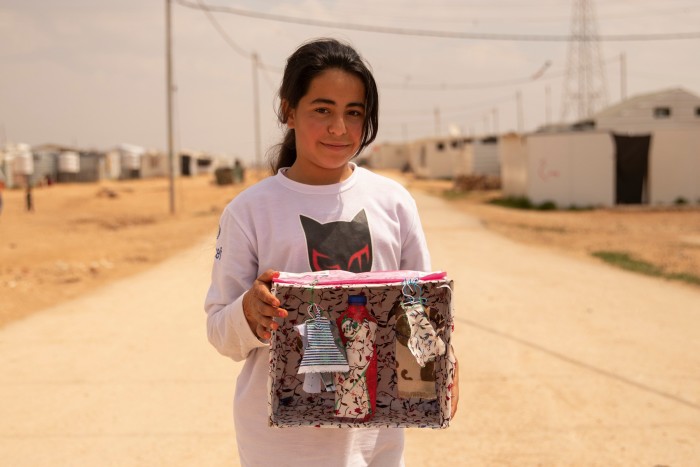
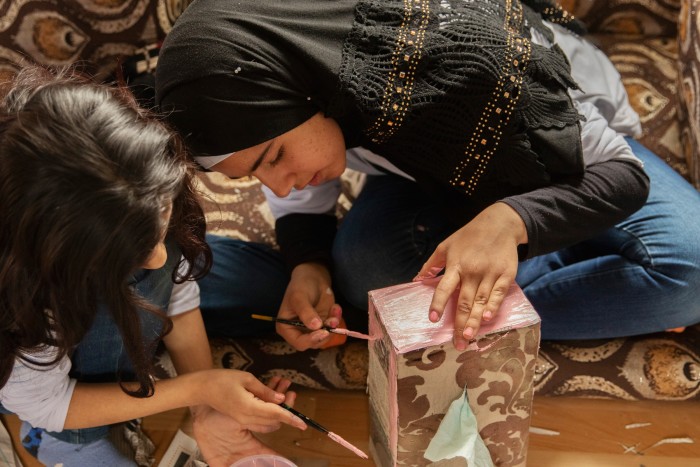
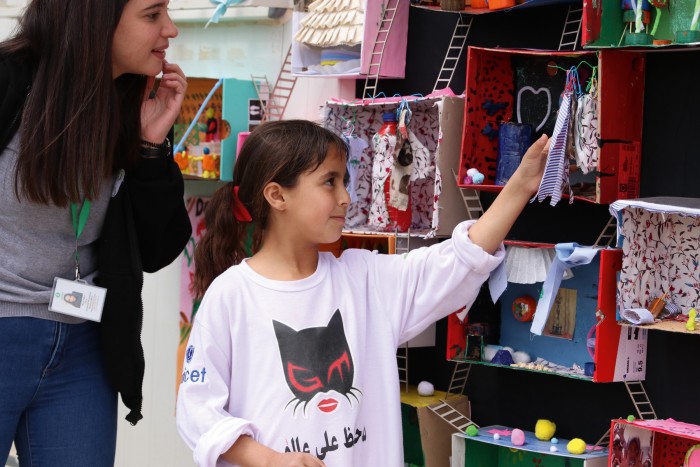
Last year, when physical workshops and exhibitions were not an option, Oxfam and de Haas worked together to create a virtual dolls’ house, entitled Alone Together, by collating submissions online. “It’s a collection of all the voices from lockdown,” says de Haas. Some have a stop-in-your-tracks power: “My dolls’ house represents life before being evacuated as a refugee vs life as a refugee,” says a young girl, Safa. “My theme is light and dark. The light side has a gold window that represents the window of golden opportunity shining on me. On the other hand, the dark side has blank, black and red windows with recycled items as a ladder trying to escape, reach for opportunities and find the light.”
This year, the project will be online again as part of Refugee Week (14 to 20 June), for which it is accepting submissions until 7 June. It’s a challenge without in-person contact. “Ideally, I’m interested in using it to tackle a problem in a specific area, and bring different people together,” says de Haas. But the ultimate goal remains the same. “The Giant Dolls’ House Project is a fund- and awareness raiser, and a discussion piece. It doesn’t solve anything, unfortunately, but we hope it makes people think.”
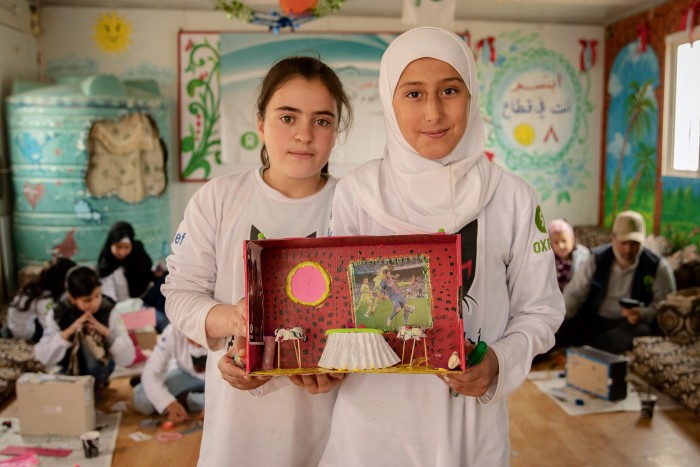
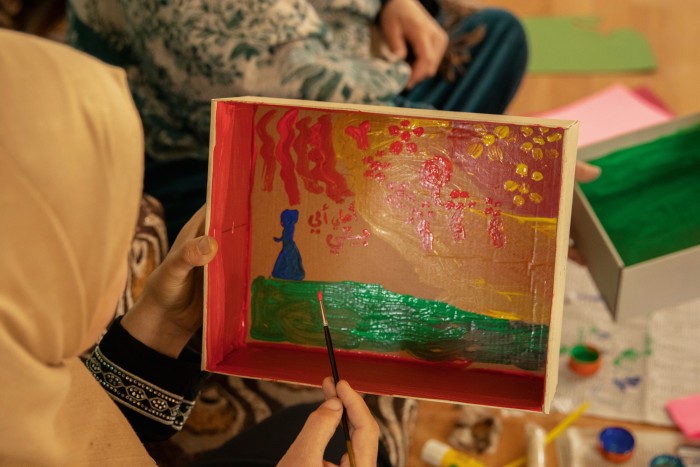
On a more personal level, de Haas hopes to fuse this project with her architectural practice in the creation of community housing. “It would be interesting to get residents to realise what they want by making it all in a dolls’ house,” she says. “You get a better story by doing and sticking, and not worrying about what the end result is, than if people grab lots of images from, say, Pinterest.”
The project is also an opportunity to highlight the Families Together campaign, of which Oxfam is a founding member. “We are campaigning for the UK government to allow more refugee families to be reunited in the UK, and that includes providing safe and legal routes for people to get here,” explains Cowan. “When refugee issues are being discussed in the media it can become very heated. Refugee Week is about celebrating what refugees are bringing to communities rather than thinking about what divides us. The Giant Dolls’ House Project is really about feeling like we all can be part of this together.”
How to give it
See the virtual exhibition and submit a box by 7 June, giantdollshouse.org
Refugee Week 14 to 20 June, refugeeweek.org.uk
Oxfam joins more than 60 organisations as part of the Families Together campaign; familiestogether.uk
Comments